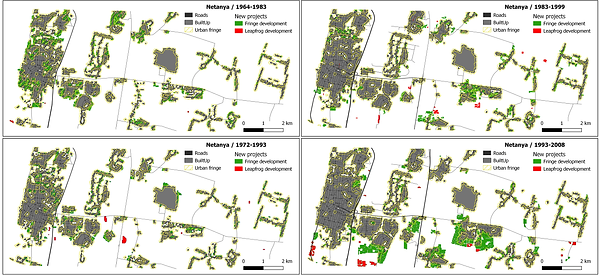Modeling urban sprawl
We consider urban dynamics as a self-organizing process that is an outcome of the interaction between developers and a “planner” represented by municipality. Developers establish new construction projects under the regulations established by the planner and under existing economic and spatial conditions. Large projects demand essential spatial resources and heavy investments and their construction take long time, while small projects may be established rapidly demand light investments.
Spatio–temporal consequences of each project critically depend on its size and location. We distinguish between urban fringe and the area beyond it. Majority of the new projects are established within the fringe that is usually characterized by high-density development. Projects beyond the fringe follow non-continuous "leapfrogging" model.
Based on the high-resolution data on the spatial dynamics of three Israeli cities – Netanya, Haifa and Sefad between the years 1960 – 2010, we estimate quantitative characteristics of the fringe and leapfrogging development and develop agent-based models of the urban growth that is based on understanding of developers’ and planner’s decision-making.
Publications:

Netanya sprawl, 1964 – 2008.
